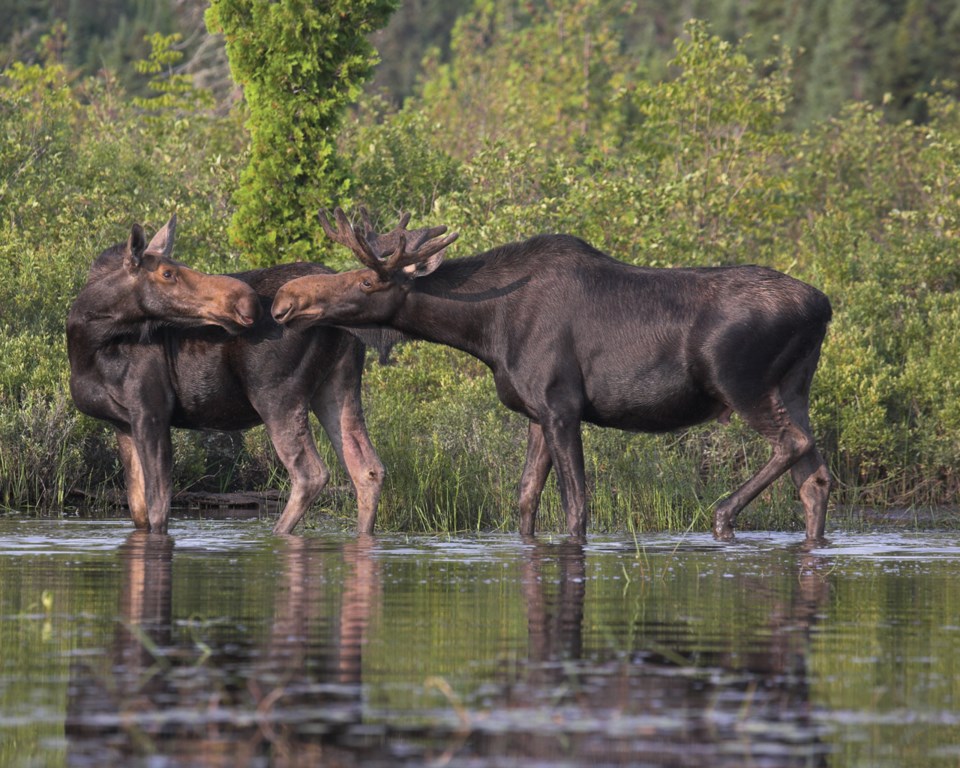THUNDER BAY -- The Northwestern Ontario Sportsmen's Alliance says the Ministry of Natural Resources and Forestry is "inflating" the estimated moose harvest in the region, in part because it lacks sufficient data.
John Kaplanis, spokesperson for the lobby group, says the MNRF's tendency to be overly cautious is a key reason for recent reductions in the number of moose- hunting tags issued by the ministry.
In an interview Wednesday with Tbnewswatch, Kaplanis said numerous hunting zones in the northwest will once again have their quotas reduced for next fall's hunt.
In Wildlife Management Unit 15B, north of Thunder Bay, the number of adult gun tags will be cut by 18 per cent, and the number of archery tags will be cut by about 40 per cent.
"That's a significant reduction in adult moose tags in a unit that's highly subscribed to by moose hunters," Kaplanis said.
He also cited WMU 13 near Thunder Bay as an example, where 80 adult gun and archery tags will no longer be available. "They're reducing the archery quota down to one bull tag in WMU 13, which is ridiculous," Kaplanis said.
"What are we really doing here? We're not saving the moose population by reducing the archery bull quota from three to one. What we are doing is taking away moose-hunting opportunities, we're affecting the socio-economic side of moose-hunting, The MNR is missing the point," he said.
Kaplanis said it's important not to confuse issued tags with the number of moose that are actually harvested in a season. "These are only given out as an opportunity for hunters to get out on the landscape to chase moose. At the end of the day, the actual harvest rate is much lower than what these tags signify."
He said without hunters buying moose licences, the overall management program will suffer. "We need to find a way to preserve tags and add tags where it's sustainable and feasible."
According to Kaplanis, because not enough hunters are returning postcard surveys after the season, the MNRF is inflating the estimated harvest. "They basically have to fudge the numbers to maintain an overly cautious approach to managing hunting," he said.
The ministry, however, paints a different picture of its rationale for cutting hunting opportunities, and notes that tag quotas are actually going up in some areas.
Spokesperson Jolanta Kowalski confirmed to Tbnewswatch that there will be an overall tag reduction of eight per cent across the province this year, including quota reductions in 14 WMUs in the northwest. However, nine WMUs in the northwest will see increases in tag quotas.
Kowalski said reductions have been made in areas where moose populations are declining, and added that the cuts are made in consultation with a public advisory body.
She said aerial survey results are one of the tools the MNRF uses to estimate populations.
"We also look at factors like current estimated moose population size relative to population objectives, mid-winter composition of the populations, past and anticipated hunter success rates, and calf harvests," Kowalski said. "Ontario continues to take action to manage our moose populations to ensure they remain healthy and resilient and the moose harvest is sustainable."
